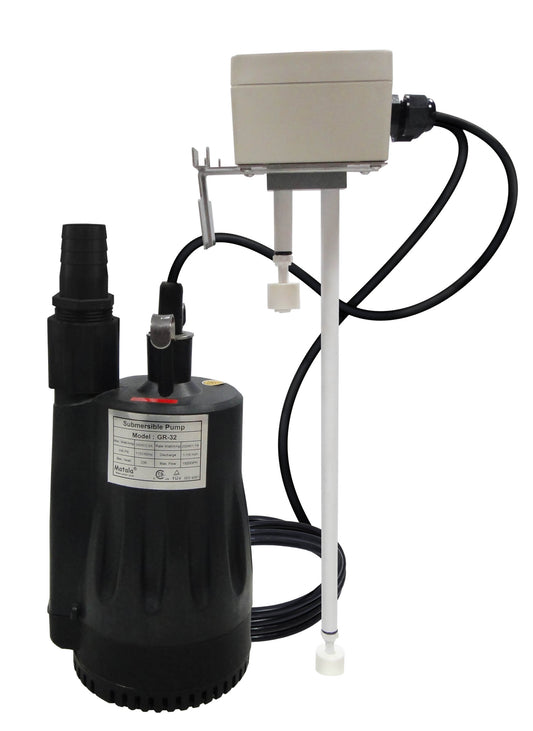Greywater Laws in Your State
Mason LogueMore and more states in the Southern part of the United States are putting in place greywater friendly legislation, and you should always check with your local enforcing agency before installing a greywater system as certain restrictions may apply.
Arizona | California | New Mexico | Texas

Arizona
In Arizona, no permit is required to use a greywater system when the flow is less than 400 gallons per day.
Tax Credit Available
Arizona law provides a tax credit for the installation of a “greywater” conservation system in a residence to reclaim water.
The tax credit is 25% of the cost of installing a water conservation system not to exceed $1000 in the taxpayer’s Arizona residence. The credit applies to the full cost of installing a water conservation system.
More information
R18-9-711. Type 1 Reclaimed Water General Permit for greywater
A. Type 1 Reclaimed Water General Permit allows private residential direct reuse of greywater for a flow of less than 400 gallons per day if all the following conditions are met:
- Human contact with greywater and soil irrigated by greywater is avoided;
- Greywater originating from the residence is used and contained within the property boundary for household gardening, composting, lawn watering, or landscape irrigation;
- Surface application of greywater is not used for irrigation of food plants, except for citrus and nut trees;
- The greywater does not contain hazardous chemicals derived from activities such as cleaning car parts, washing greasy or oily rags, or disposing of waste solutions from home photo labs or similar hobbyist or home occupational activities;
- The application of greywater is managed to minimize standing water on the surface;
- The greywater system is constructed so that if blockage, plugging, or backup of the system occurs, greywater can be directed into the sewage collection system or on-site wastewater treatment and disposal system, as applicable. The greywater system may include a means of filtration to reduce plugging and extend system lifetime;
- Any greywater storage tank is covered to restrict access and to eliminate habitat for mosquitoes or other vectors;
- The greywater system is sited outside of a floodway;
- The greywater system is operated to maintain a minimum vertical separation distance of at least five feet from the point of greywater application to the top of the seasonally high groundwater table;
- For residences using an on-site wastewater treatment facility for black water treatment and disposal, the use of a greywater system does not change the design, capacity, or reserve area requirements for the on-site wastewater treatment facility at the residence, and ensures that the facility can handle the combined black water and greywater flow if the greywater system fails or is not fully used;
- Any pressure piping used in a greywater system that may be susceptible to cross connection with a potable water system clearly indicates that the piping does not carry potable water;
- Greywater applied by surface irrigation does not contain water used to wash diapers or similarly soiled or infectious garments unless the greywater is disinfected before irrigation; and
- Surface irrigation by greywater is only by flood or drip irrigation.
B. Prohibitions. The following are prohibited:
- Greywater use for purposes other than irrigation, and
- Spray irrigation.
C. Towns, cities, or counties may further limit the use of greywater described in this Section by rule or ordinance.
California
California adopted a new greywater regulation in January 2010.
No permit is required to use a greywater system when it is connected to your washing machine.
More information
Extract from the updated California Plumbing Code (Title 24, part 5, Chapter 16A, Part 1)
A greywater system, utilizing only a single domestic clothes washing machine in a one-or-two family dwelling, in compliance with all of the following, may be installed or altered without a construction permit:
- If required, notification has been provided to the Enforcing Agency regarding the proposed location and installation of a greywater irrigation or disposal system.
- The design shall allow the user to direct the flow to irrigation or disposal field or the building sewer. The direction control of the greywater shall be clearly labeled and readily accessible to the user.
- The installation, change, alteration or repair of the system does not include a potable water connection or a pump and does not affect other building, plumbing, electrical or mechanical components including structural features, egress, fire-life safety, sanitation, potable water supply piping or accessibility.
- The greywater shall be contained on the site where it is generated.
- Greywater shall be directed to and contained within an irrigation or disposal field.
- Ponding or runoff is prohibited and shall be considered a nuisance.
- Greywater may be released above the ground surface provided at least two (2) inches of mulch, rock, or soil, or a solid shield covers the release point. Other methods which provide equivalent separation are also acceptable.
- Greywater systems shall be designed to minimize contact with humans and domestic pets.
- Water used to wash diapers or similarly soiled or infectious garments shall not be used and shall be diverted to the building sewer.
- Greywater shall not contain hazardous chemicals derived from activities such as cleaning car parts, washing greasy or oily rags, or disposing of waste solutions from home photo labs or similar hobbyist or home occupational activities.
- Exemption from construction permit requirements of this code shall not be deemed to grant authorization for any greywater system to be installed in a manner that violates other provisions of this code or any other laws or ordinances of the Enforcing Agency.
- An operation and maintenance manual shall be provided. Directions shall indicate the manual is to remain with the building throughout the life of the system and indicate that upon change of ownership or occupancy, the new owner or tenant shall be notified the structure contains a greywater system.
For the expert
2007 CPC, Title 24, Part 5, Chapter 16A, Part I – Non potable Water Reuse System
Read the full version of the greywater regulation in California.
New Mexico
In New Mexico, no permit is required to use a greywater system when the flow is less than 250 gallons per day.
More information
House Bill 711, passed in 2005, related to water:
Shall not require a permit for applying less than two hundred fifty gallons per day of private residential greywater originating from a residence for the resident’s household gardening, composting or landscape irrigation if:
- A constructed greywater distribution system provides for overflow into the sewer system or on-site
- Wastewater treatment and disposal system;
- A greywater storage tank is covered to restrict access and to eliminate habitat for mosquitos or other vectors;
- A greywater system is sited outside of a floodway;
- Greywater is vertically separated at least five feet above the ground water table;
- Greywater pressure piping is clearly identified as a nonpotable water conduit;
- Greywater is used on the site where it is generated and does not run off the property lines;
- Greywater is applied in a manner that minimizes the potential for contact with people or domestic pets;
- Ponding is prohibited, application of greywater is managed to minimize standing water on the surface and to ensure that the hydraulic capacity of the soil is not exceeded;
- Greywater is not sprayed;
- Greywater is not discharged to a watercourse; and
- Greywater use within municipalities or counties complies with all applicable municipal or county ordinances enacted pursuant to Chapter 3, Article 53 NMSA 1978;
For the expert
Read the full version of the greywater regulation in New Mexico.
Texas
In Texas, no permit is required to use a greywater system when the flow is less than 400 gallons per day.
More information
Texas Health & Safety Code – Section 341.039.Greywater Standards
- 341.039. Greywater STANDARDS.
(a) The commission by rule shall adopt and implement minimum standards for the use and reuse of greywater for:
(1) Irrigation and other agricultural purposes;
(2) Domestic use, to the extent consistent with Subsection (c);
(3) Commercial purposes; and
(4) Industrial purposes.
(b) The standards adopted by the commission under Subsection (a) must assure that the use of greywater is not a nuisance and does not damage the quality of surface water and groundwater in this state.
(c) The commission may not require a permit for the domestic use of less than 400 gallons of greywater each day if the greywater:
(1) Originates from a private residence;
(2) Is used by the occupants of that residence for gardening, composting, or landscaping at the residence;
(3) Is collected using a system that overflows into a sewage collection or on-site wastewater treatment and disposal system;
(4) Is stored in tanks that:
(A) Are clearly labeled as nonpotable water;
(B) Restrict access, especially to children; and
(C) Eliminate habitat for mosquitoes and other vectors;
(5) Uses piping clearly identified as a nonpotable water conduit, including identification through the use of purple pipe, purple tape, or similar markings;
(6) Is generated without the formation of ponds or pools of greywater;
(7) Does not create runoff across the property lines or onto any paved surface; and
(8) Is distributed by a surface or subsurface system that does not spray into the air.
(d) Each builder is encouraged to:
(1) Install plumbing in new housing in a manner that provides the capacity to collect greywater from all allowable sources; and
(2) Design and install a subsurface greywater system around the foundation of new housing in a way that minimizes foundation movement or cracking.
(e) In this section, “greywater” means wastewater from clothes-washing machines, showers, bathtubs, hand-washing lavatories, and sinks that are not used for disposal of hazardous or toxic ingredients. The term does not include wastewater:
(1) That has come in contact with toilet waste;
(2) From the washing of material, including diapers, soiled with human excreta; or
(3) From sinks used for food preparation or disposal.
For the expert
Read the full version of the greywater regulation in Texas.







